Following closely after the first pictures of atoms we now have pictures of molecules reacting:

Middle and High School … from a Montessori Point of View
Following closely after the first pictures of atoms we now have pictures of molecules reacting:

Paul Brians’ excellent reference, Common Errors in English Usage, is available online.
An example:
LOSE/LOOSE
This confusion can easily be avoided if you pronounce the word intended aloud. If it has a voiced Z sound, then it’s “lose.” If it has a hissy S sound, then it’s “loose.” Here are examples of correct usage: “He tends to lose his keys.” “She lets her dog run loose.” Note that when “lose” turns into “losing” it loses its “E.”
Brians, 2008. Common Errors in English Usage
The lucky try more things, and fail more often, but when they fail they shrug it off and try something else. Occasionally, things work out.
— McRaney, 2013: Survivorship Bias on You Are Not So Smart.
David McRaney synthesizes work on luck in an article on survivorship bias.
… the people who considered themselves lucky, and who then did actually demonstrate luck was on their side over the course of a decade, tended to place themselves into situations where anything could happen more often and thus exposed themselves to more random chance than did unlucky people.
Unlucky people are narrowly focused, [Wiseman] observed. They crave security and tend to be more anxious, and instead of wading into the sea of random chance open to what may come, they remain fixated on controlling the situation, on seeking a specific goal. As a result, they miss out on the thousands of opportunities that may float by. Lucky people tend to constantly change routines and seek out new experiences.
McRaney goes also points out how this survivorship bias negatively affects scientific publications (scientists tend to get successful studies published but not ones that show how things don’t work), and in war (deciding where to armor airplanes).
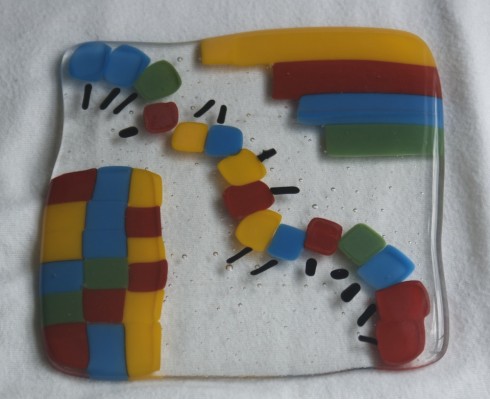
Last weekend, I took the Glass Art Sampler class at the Third Degree Glass Factory, and got to try my hand at making a paperweight, a glass tile, and a few beads. It was awesome.
I’d had the chance to make a paperweight when my Lamplighter class had visited St. Louis a couple years ago, so I had a general idea of some of the possibilities. This time, however, I had DNA sequences on the brain, and went in with a bit of a theme in mind.
The tiles were the easiest because all you need to learn how to do was cut glass — by scoring it and using a little pliers like device to break it along the score — and then arrange the tiles of colored and clear glass on a tile. The arrangement was placed in a flat kiln, and then a day or so later, you tile would be all melted together. Pretty simple for a beginner.
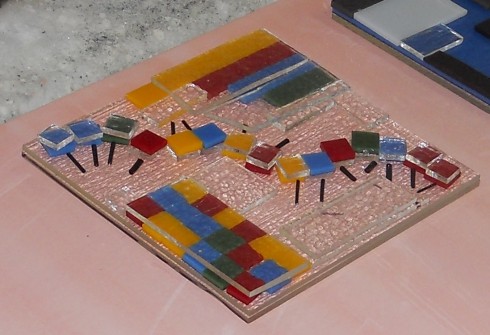
There is, of course, a bit more to it than that. The way the glass is stacked can be used to create floating effects; some colors will react when melted in the kiln to give different colors; care needs to be taken to manage where bubbles show up in the cooled glass; among other things.
Since it’s easiest to make straight edged cuts in glass, I made four sets of square colored tiles — yellow, red, blue, and green — to make a nucleotide sequence based off the DNA Writer translation table (with the start and stop codons added in).
I tried something similar when making the paperweight.
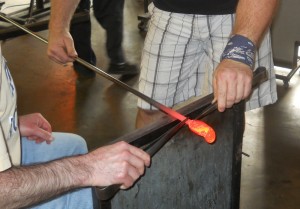
Usually, you start with a blob of molten, clear glass on the end of a metal rod, and dip it into trays of colored glass shards that stick to the molten glass. You can then pull and twist the viscous glass with a large pair of tweezers to blend the colors and make pretty patterns. The twisted glass is then pushed into a blob at the end of the rod, and the whole thing encased in more clear glass.

Instead, I wanted to create a discernible pattern of colors to create a multi-colored helix of molten phenocryst-like blobs in the clear glass. I really wasn’t sure how to make it work. I though perhaps I could dip the initial glass blob into a pattern of shards and then pull it out once while twisting to get the spiral pattern. Our instructor was patient as I tried to explain my ultimate goal, and he came up with a more subtle method for making the spiral.

I laid out the short pattern of colored glass shards and carefully dipped the initial blob of clear glass into it. All the shards stuck, which was good. Then instead of pulling with tweezers, the instructor helped my gently roll the blob of glass along a metal surface at a slight downward angle. Contact with the metal cooled the tip of the glass faster than rest of the blob causing the whole thing to twist just nicely. After smoothing things with a block we covered it with more clear glass (and smoothed again), and were done.
One week later:

Working with big blobs of extremely hot glass is quite challenging, so I couldn’t replicate this on my own at the moment. I may have to take another class.
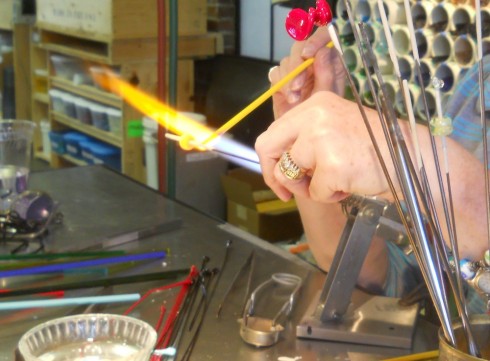
I would feel comfortable making glass beads after the one class, but mastering the art is going to take a lot of practice. The flame — created from a mix of fuel gas (propane I think) and oxygen — is quite hot, and it takes some expertise to be able to melt the glass and twirl it onto the rods to make a nice round bead. The trickiest part, however, is making little colored dots to decorate the bead. You need to melt small bits of glass for the dots, then move the bead through the flame to warm it up enough so the dot will stick to the bead while not melting the bead too much. Then you pass the bead through the flame again to set the dot. If the bead or the dot is too cool when they’re put together the dots will pop off. I had a lot of popping dots.
I was not able to get my nucleotide sequence onto a bead in the time I had, but I did at least get to make a couple beads.
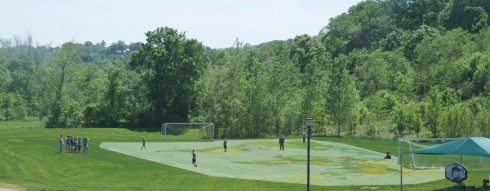
One of the games Dr. A. plays with the middle school geography class is to have them use the soccer field as a large map. They chose a place and someone runs to its location on the field. What I like is that he insists that the map be all in their heads. They might have one or two control points, but they have to visualize the map mentally.
I saw them out on the soccer field today, and I thought I’d make their imaginary map a little more literal in Gimp.
UPDATE: Dr. A[ustin] clarifies the rules of the competitive game they were playing in the comments below, in case anyone wants to try it.
Update 2: Move your mouse over the image below to see the picture with or without the map (larger version here).
Unfortunately, the method of the demise of the worm-eating warbler that flew into our window appears to be more the rule than the exception. David Sibley (2010) calculates that windows are the number one, people-influenced, cause of death for birds.
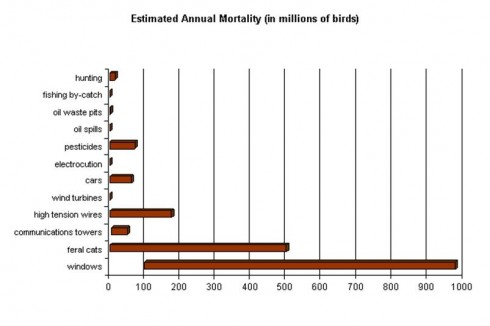
Notice that cats are number two on the list.